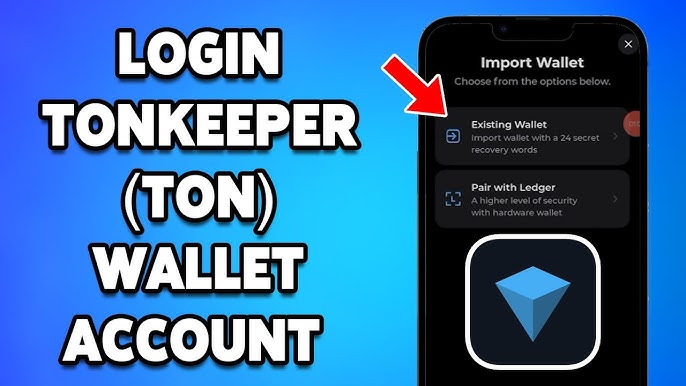
In the rapidly evolving digital landscape, innovative tools and platforms are emerging to streamline online experiences and improve efficiency. One such standout is Rabby, a cutting-edge solution designed to simplify various aspects of digital interaction. Whether you’re a crypto enthusiast, a professional seeking productivity tools, or an everyday internet user, Rabby promises to enhance your online journey. This article delves into what makes Rabby unique, its core features, benefits, and its potential impact on the digital ecosystem.
What is Rabby?
Rabby is a comprehensive digital platform that caters to the needs of modern internet users. Whether it manifests as a browser extension, wallet, or Web3 gateway, Rabby combines functionality with user-centric design. It seeks to bridge the gap between traditional digital tools and the burgeoning demands of decentralized systems, making it an ideal companion for individuals navigating Web3 environments.
Designed with simplicity and efficiency in mind, Rabby stands out by prioritizing ease of use while integrating advanced features. This combination ensures that users, regardless of their technical expertise, can make the most of its capabilities.
Core Features of Rabby
Rabby’s feature set is tailored to empower users by addressing key pain points in the digital experience. Below are some standout functionalities that make Rabby a versatile tool:
1. Web3 Integration
Rabby serves as a reliable gateway to the decentralized web, providing users seamless access to Web3 platforms, dApps, and blockchain services. This integration eliminates the need for multiple tools, ensuring that everything a user needs is consolidated into one efficient system.
2. Enhanced Security
In an age where online threats are prevalent, Rabby prioritizes security. With robust encryption protocols and advanced protective features, Rabby ensures user data and transactions are safe from potential breaches. Its emphasis on privacy resonates with users looking to safeguard their digital footprints.
3. Intuitive User Interface
Navigating Rabby is a breeze, thanks to its clean and intuitive design. The user interface is crafted to minimize confusion, making it accessible for both beginners and advanced users. Its design philosophy focuses on reducing friction and optimizing the user experience.
4. Multi-Platform Compatibility
Rabby is designed to work seamlessly across various platforms, including popular web browsers and operating systems. This flexibility ensures that users can integrate Rabby into their workflows without disruption, regardless of their preferred devices or platforms.
5. Crypto and Wallet Management
For cryptocurrency enthusiasts, Rabby doubles as a secure and user-friendly wallet. It supports multiple cryptocurrencies, offers real-time tracking, and facilitates transactions with minimal hassle. By integrating blockchain technology, Rabby ensures that crypto management is as simple as traditional banking.
6. Productivity Tools
Beyond Web3 and crypto features, Rabby includes productivity-enhancing tools such as task organizers, note-taking integrations, and streamlined workflows. These features make it appealing to professionals looking for ways to optimize their digital activities.
How Rabby Benefits Users
The appeal of Rabby lies not just in its features but also in the tangible benefits it brings to users. Here’s how Rabby can improve your digital life:
1. Simplification of Complex Processes
Rabby’s core mission is to simplify otherwise complex digital processes. Whether managing cryptocurrency transactions or navigating decentralized applications, Rabby ensures that even novice users can engage confidently and efficiently.
2. Time Savings
By consolidating multiple functions into a single tool, Rabby eliminates the need to juggle various apps and platforms. This consolidation results in significant time savings, allowing users to focus on their priorities.
3. Enhanced Privacy
With Rabby’s robust security measures, users can browse and transact online with peace of mind. The platform’s commitment to protecting user data ensures that personal information and assets remain secure.
4. Increased Accessibility
Thanks to its intuitive design and multi-platform compatibility, Rabby is accessible to users of all skill levels. This democratization of advanced digital tools makes Rabby a valuable asset for everyone, from tech-savvy individuals to complete beginners.
5. Cost Efficiency
Instead of investing in multiple specialized tools, users can rely on Rabby as an all-in-one solution. This consolidation not only saves time but also reduces costs associated with subscribing to or purchasing additional software.
Rabby in the Web3 Ecosystem
One of Rabby’s most significant contributions is its role in the Web3 ecosystem. As the internet transitions from centralized to decentralized structures, platforms like Rabby are vital for fostering adoption and accessibility. Here’s how Rabby fits into this new paradigm:
1. Bridging Web2 and Web3
Rabby acts as a bridge between traditional internet applications and decentralized platforms. It offers users an easy entry point into Web3 without requiring extensive knowledge of blockchain technology.
2. Supporting dApps
Decentralized applications (dApps) are at the heart of Web3, and Rabby ensures that users can access, interact with, and manage these applications effortlessly. Its compatibility with a wide range of dApps makes it an essential tool for enthusiasts and professionals alike.
3. Simplifying Crypto Adoption
Cryptocurrency adoption is often hindered by technical barriers. Rabby addresses this by making crypto wallets, transactions, and management more straightforward, encouraging more users to participate in the decentralized economy.
Use Cases of Rabby
Rabby’s versatility means it can cater to a wide range of users and scenarios. Below are some common use cases where Rabby proves invaluable:
1. Individual Users
For individuals, Rabby offers tools to enhance daily online activities. From managing passwords and securing transactions to organizing tasks, it’s a one-stop solution for personal digital management.
2. Businesses and Teams
Organizations can leverage Rabby to improve team productivity and streamline workflows. Its security features also make it a reliable choice for managing sensitive information and communications.
3. Developers and Tech Enthusiasts
Tech-savvy users and developers benefit from Rabby’s advanced functionalities, such as blockchain integration and dApp support. It’s a valuable tool for exploring and experimenting within the decentralized space.
The Future of Rabby
As digital trends continue to evolve, Rabby is poised to remain at the forefront of innovation. Future developments could include:
- Expanded Blockchain Support: Enhancing compatibility with additional blockchain networks and protocols.
- AI-Powered Features: Introducing artificial intelligence to further simplify user experiences and optimize workflows.
- Enhanced Customization: Allowing users to tailor Rabby to their specific needs with modular features and add-ons.
- Community-Driven Development: Incorporating feedback from users to drive future updates and improvements.
Conclusion
Rabby represents a new standard for digital tools, combining simplicity, security, and advanced features in a single platform. Whether you’re exploring the possibilities of Web3, managing cryptocurrencies, or seeking to enhance productivity, Rabby has something to offer.
In a world where digital efficiency and security are paramount, Rabby is more than just a tool—it’s a trusted companion for navigating the complexities of the online realm. As it continues to evolve, Rabby’s impact on the digital ecosystem is sure to grow, making it a platform worth watching and adopting. The future of digital interaction is here, and it’s called Rabby.

